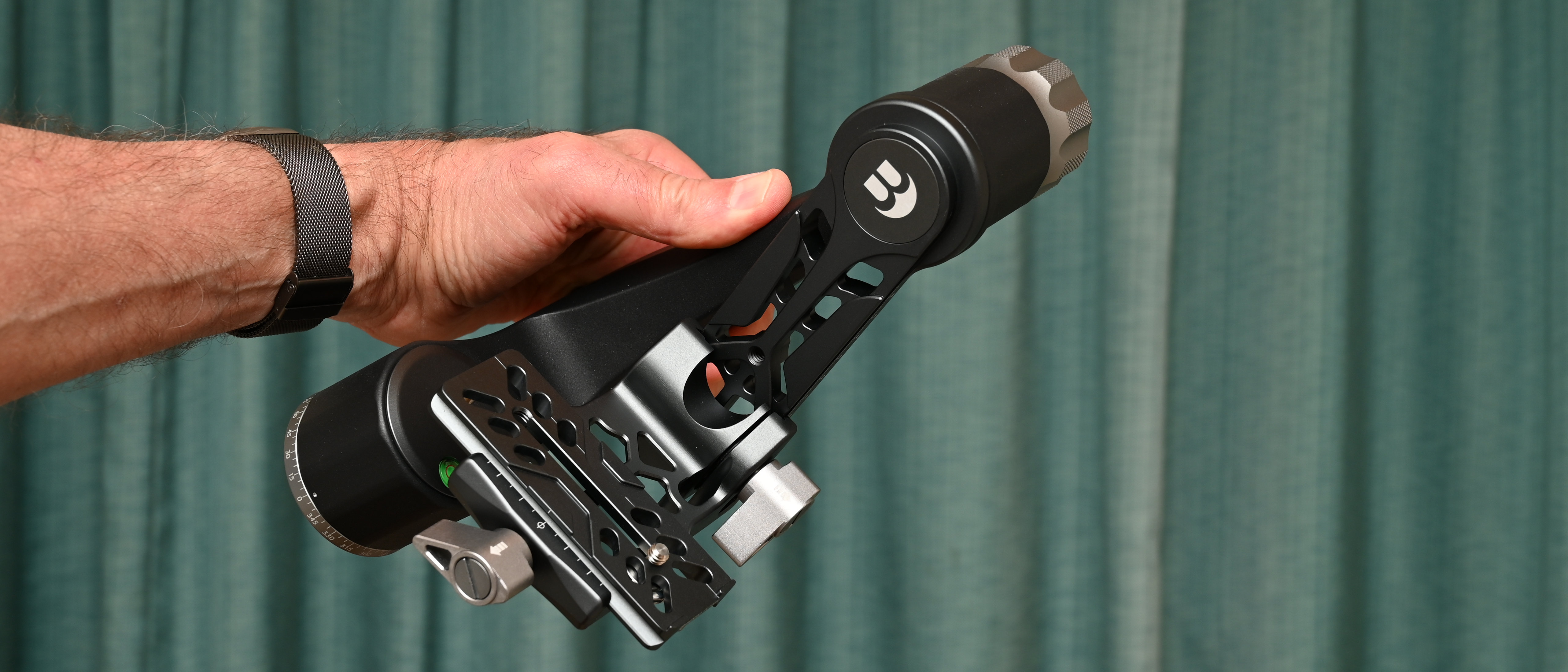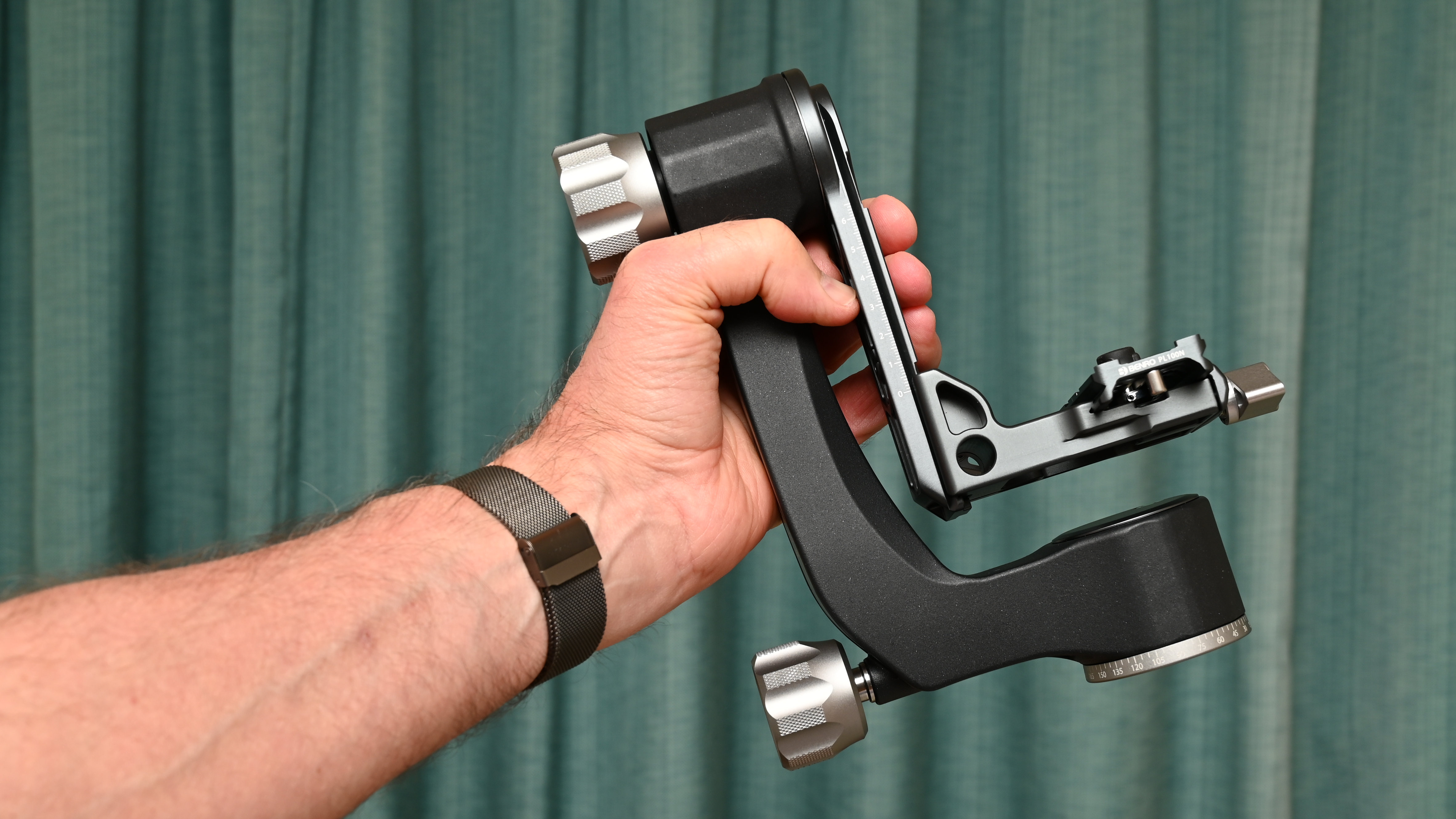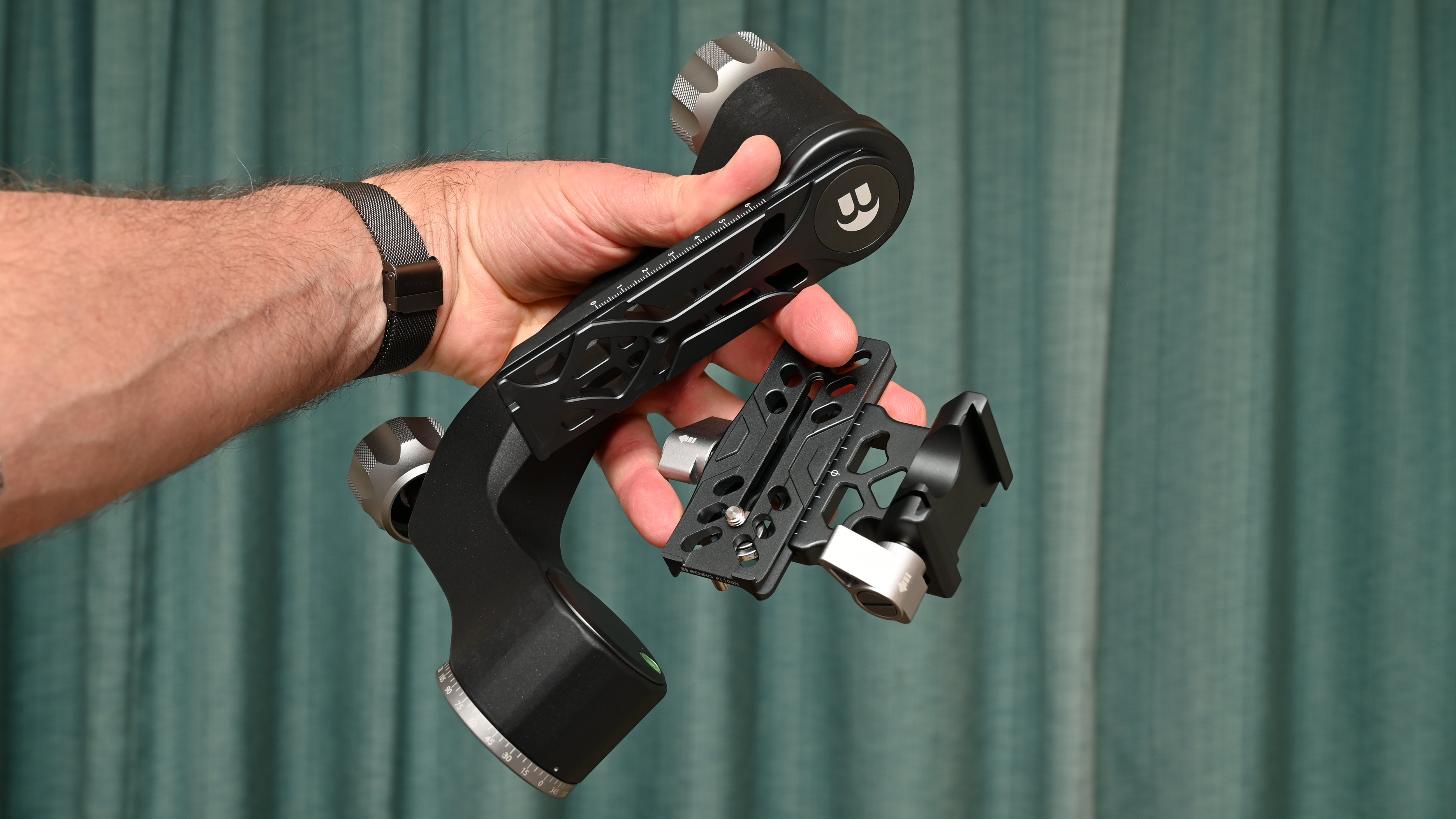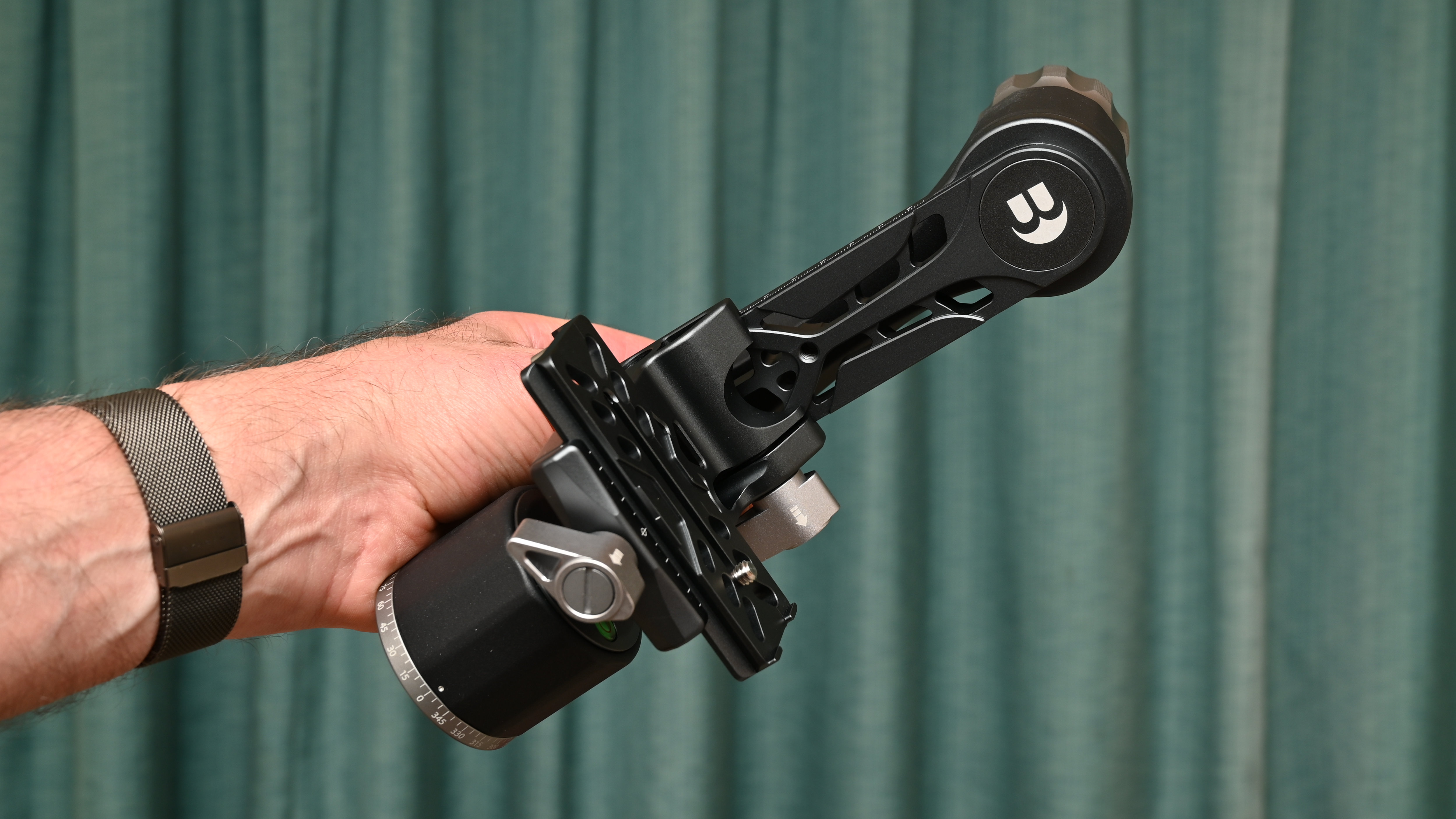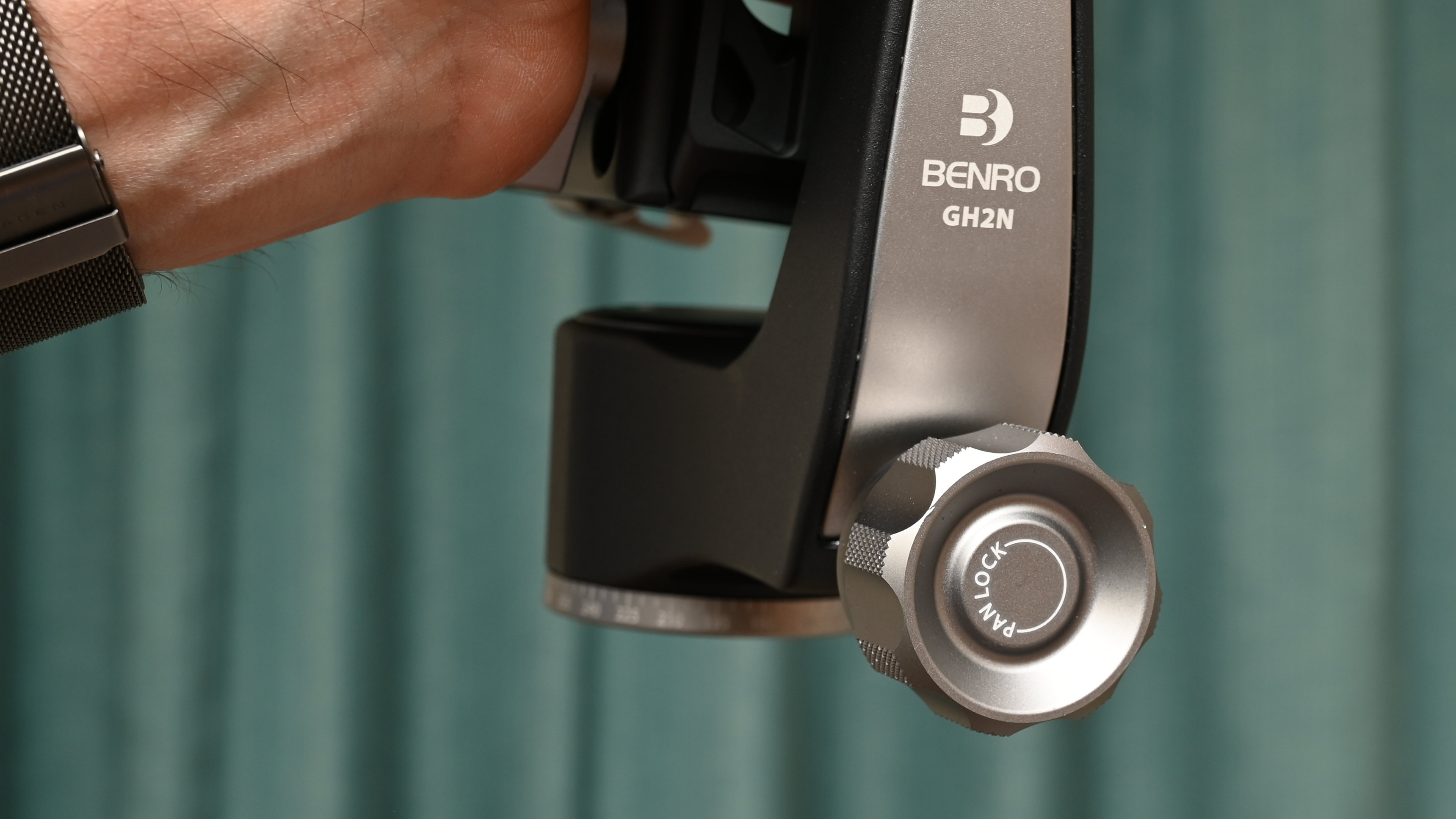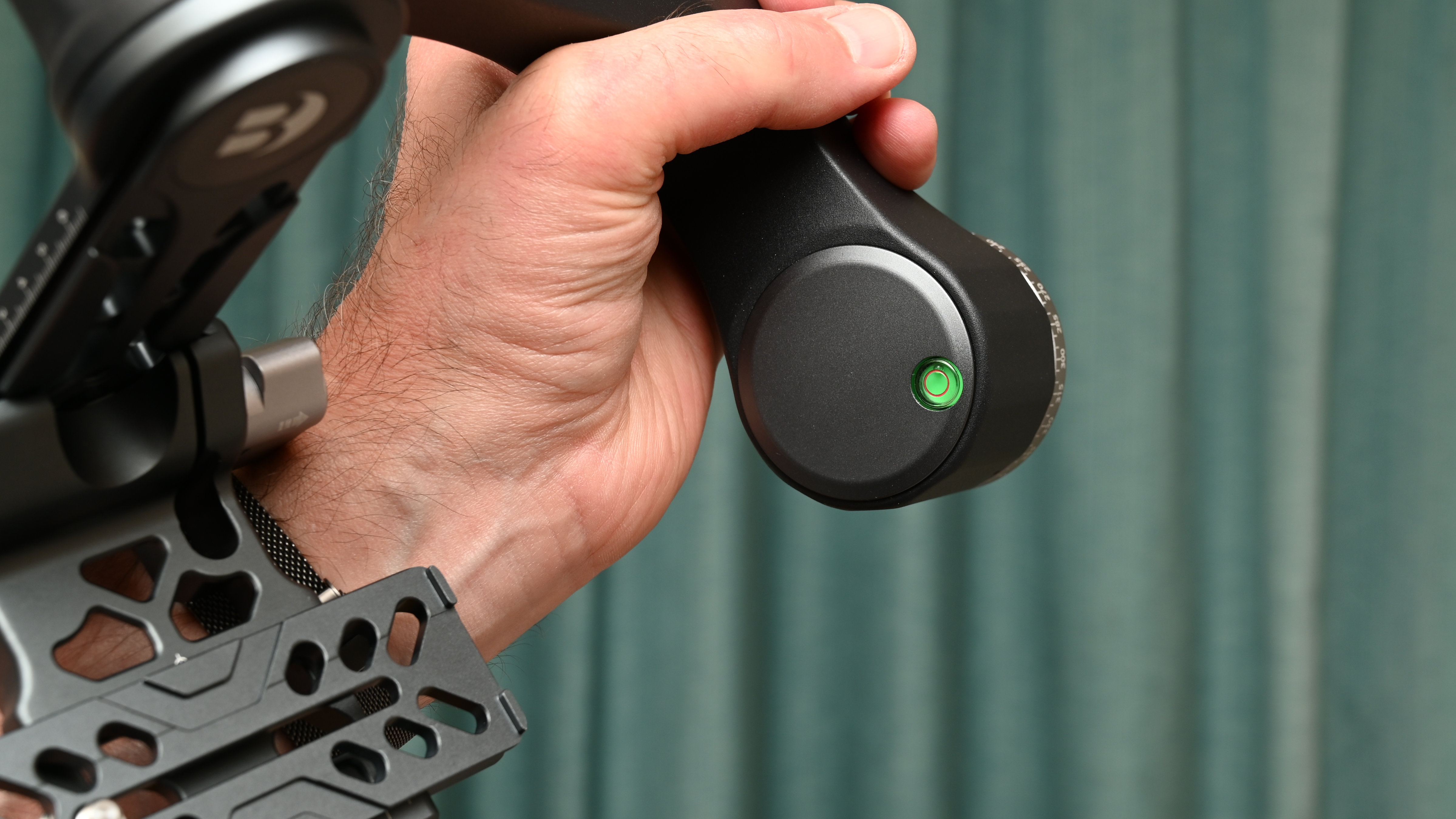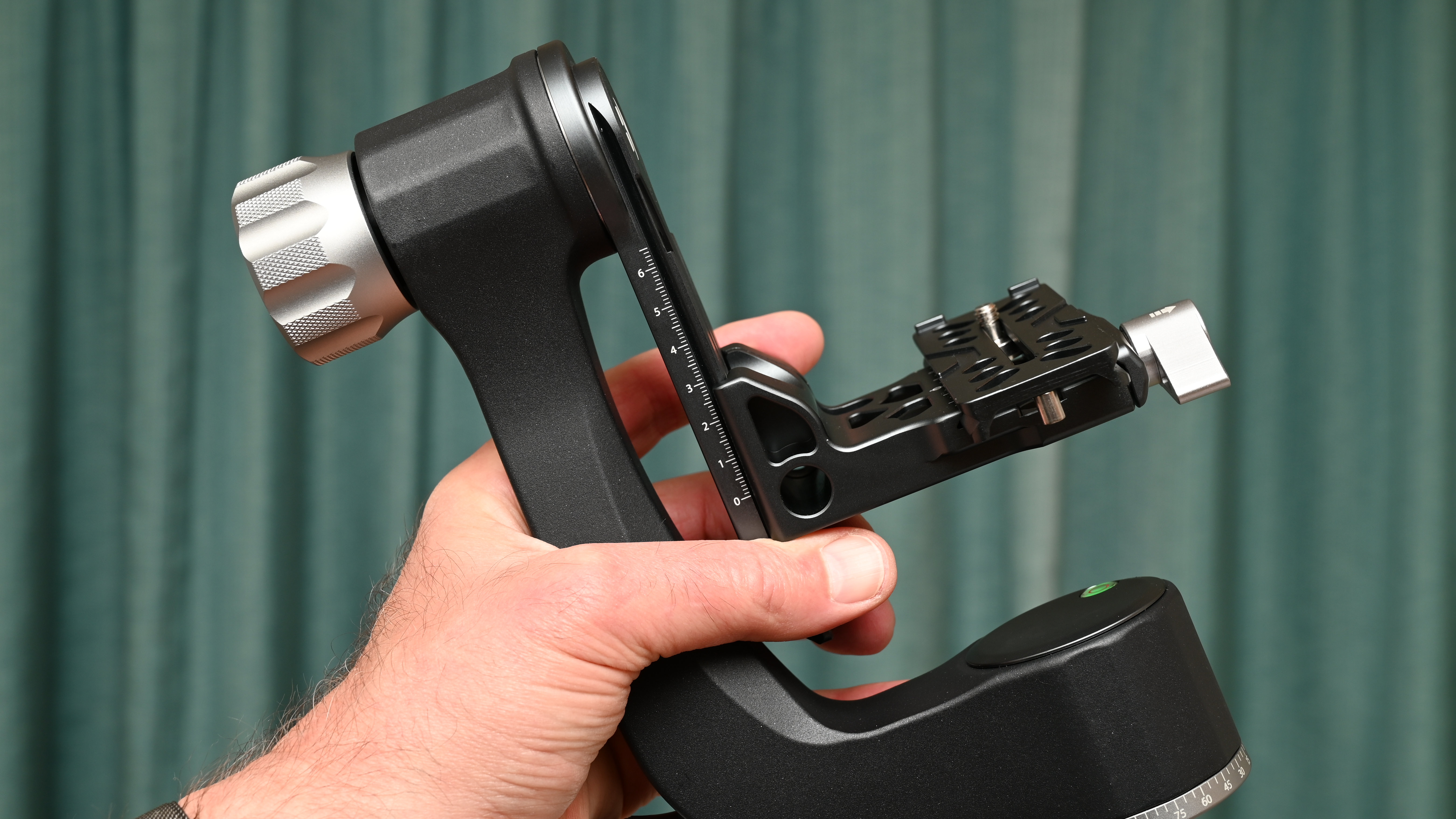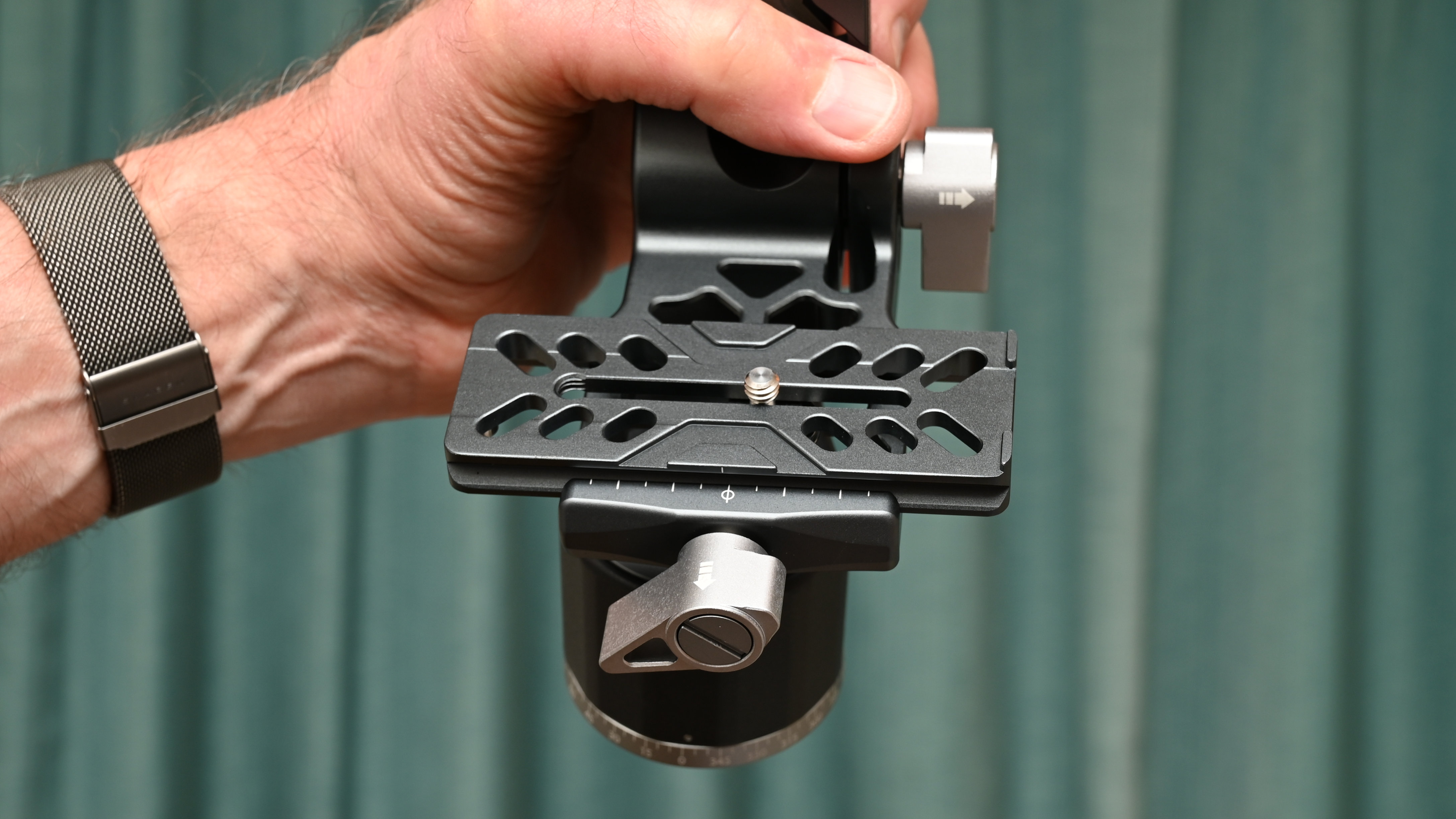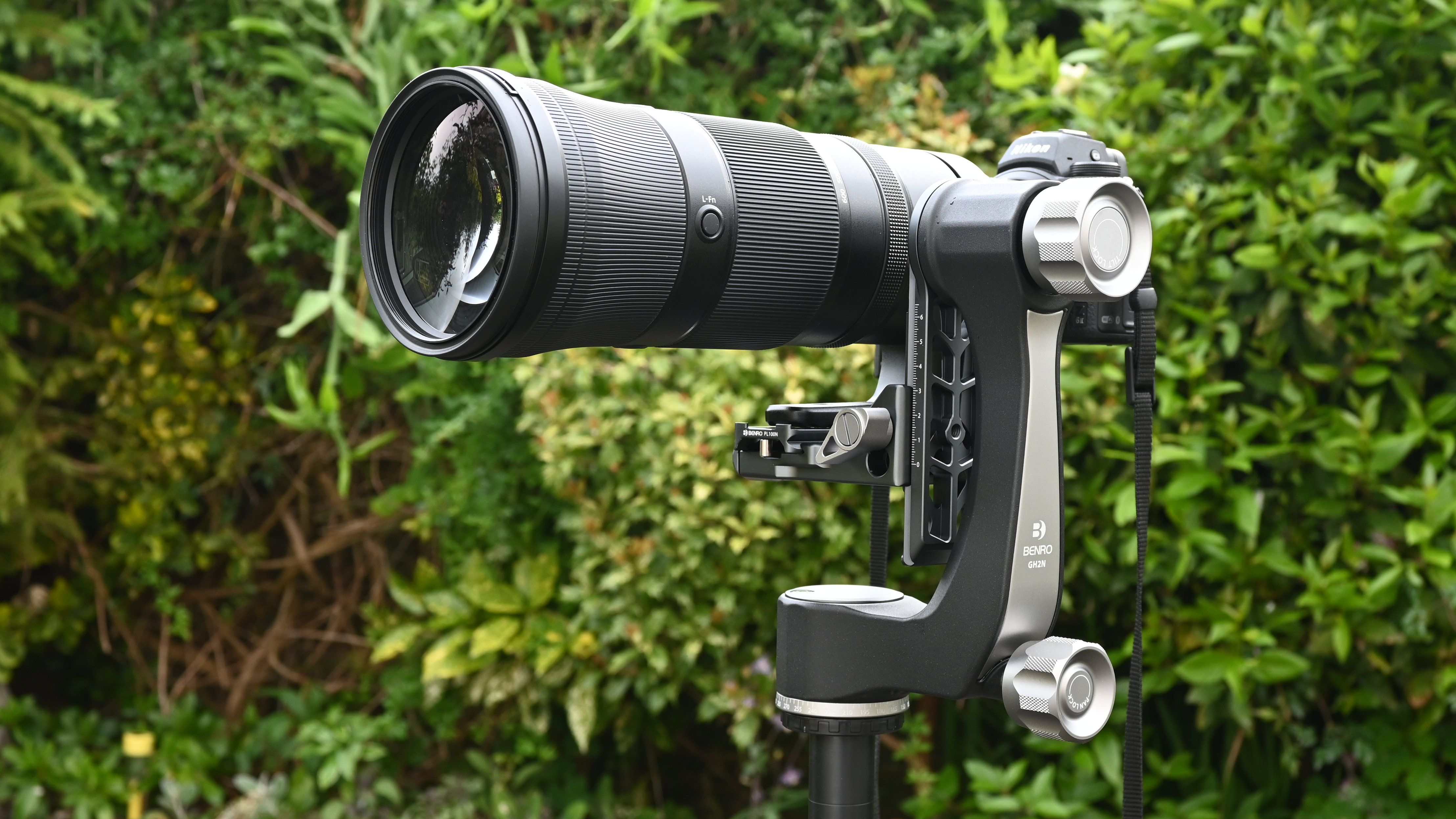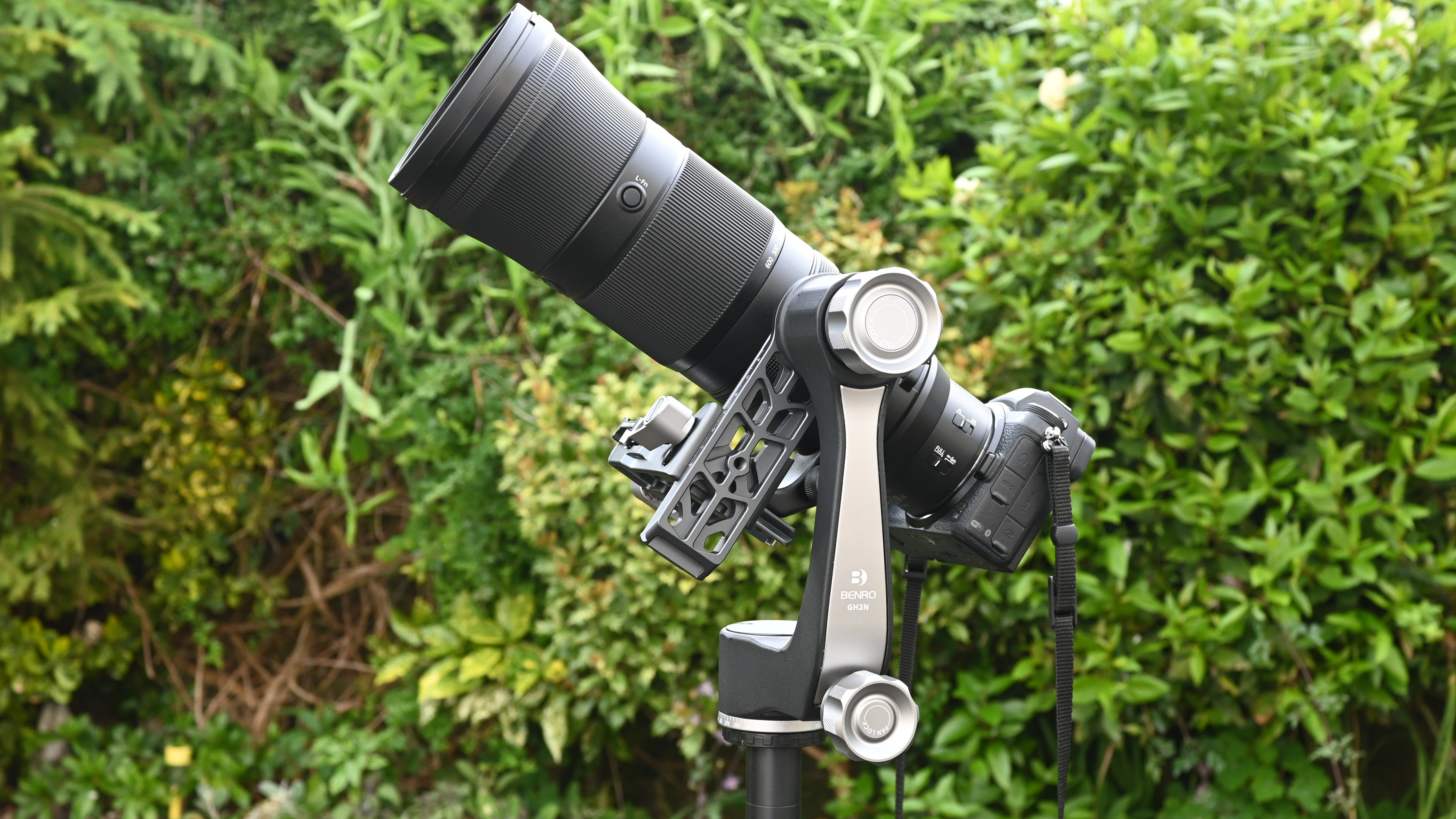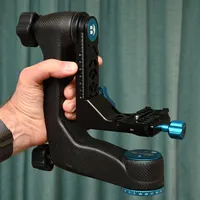Digital Camera World Verdict
I really like this Benro GH2N gimbal head. Sure, it lacks the more exotic carbon fiber build of its sibling Benro GH5C but worked equally well in my tests and knocks a big lump off the purchase price. It’s a great tool for weightless, effortless shooting with big, heavy lenses.
Pros
- +
Strong yet lightweight design
- +
Premium build quality
- +
Smooth, fluid-feeling movement
Cons
- -
Necessarily large
Why you can trust Digital Camera World
Not to be confused with gimbals for handheld run-and-gun videography, this is a ‘gimbal head’ designed to mount on a sturdy tripod. It aims to be one of the best gimbal heads available, based on the usual L-shaped main bracket mounted on a panning base, and a swinging arm connected by a pivot joint at the top. It’s designed to support the weight of heavy lenses attached via their tripod collar, while also enabling effortless tilting and panning for tracking anything and everything from birds in flight or aircraft at an air show to pretty much any subject that’s highly mobile, especially if it’s moving up and down as well as laterally.
Benro GH2N gimbal head: Specifications
Material | Aluminum |
Max load | 25kg / 55lb |
Weight | 1.2kg / 2.65lb |
Height | 22.5cm / 8.9in |
Base diameter | 57.4mm / 2.26in |
QR plate | Arca-Swiss type |
Benro GH2N gimbal head: Price
For the sake of comparison, the carbon fiber Benro GH5C costs around $435 / £485 / AU$900, which is pretty much par for the course when it comes to gimbal heads. This aluminum head undercuts most of the high-performance competition, selling at $350 / £360 / AU$599. I reckon that’s quite a bargain, especially as it’s only 120g / 4.2oz heavier than its carbon fiber sibling. There’s not much difference in the maximum load rating either, the GH5C being specified at 30kg / 66lb and this aluminum version being rated at a still very strong 25kg / 55lb. Even the biggest and heaviest telephoto lenses and cameras that I tend to use don’t come anywhere near that.
Benro GH2N gimbal head: Design & Handling
Pan and tilt heads can be useful for enabling movement when tracking the action using a monopod or tripod. The Benro FS20PRO Video & Foto Head is a fine example of the breed but, while it works very well indeed, it falls short of the load-bearing potential and the kind of performance you can expect from a proper gimbal head. This one comes well protected in a retail box that’s the usual cardboard on the outside, but with tailored foam padding on the inside. It’s actually packed in two separate parts, along with some accessories and a user handbook.
Unpacking the head, the first job is to connect up the horizontal plate to the swinging arm. The task is accomplished in double-quick time, as it simply slides on from the top, after which you can tighten the clamp to lock it in place. There’s actually something to be said for separating the two items when you’re stowing the gimbal away, to keep everything neat and tidy.
When I said that connecting the two main parts together was the first job, it’s actually pretty much the only job. Once you’ve done that, the gimbal is ready to use. However, just holding in your hand and feasting your eyes on it for a few moments gives a good impression of the high standards of smart design work and precision engineering that’s gone into its manufacture. I particularly like the hollowed out ribs of the swinging arm and lens plate, which retain strength while reducing weight.
The head connects to a tripod via its panning base, which has the usual 3/8in threaded socket of heavy-duty affairs. To help keep track of movements and replicate angles if necessary, the 360-degree panning base has numerical values printed at 15-degree intervals, as well as marker lines at every 5 degrees.
The clamp for the panning section has a screw that runs the horizontal length of the main L-shaped bracket, hooked up to a large knurled and shaped aluminum knob at the rear. It feels comfortable and secure in use, and only needs minimal rotation when you want to swap between panning and locking off the mechanism.
The best camera deals, reviews, product advice, and unmissable photography news, direct to your inbox!
Looking at the panning section of the base from the top, there’s a handy bubble level which you can use for leveling the tripod legs when you’re working on uneven surfaces, or just setting the tripod legs anywhere between the minimum and maximum lengths of each leg section.
The vertical section of the swinging arm is again calibrated, this time in millimeters. This can be useful because part of the setup of any lens for use with the gimbal is to alter the height of the platform so that the center of the lens is on the same level as the top pivot that’s used for the tilt mechanism. Make a note of the measurement on the calibrated scale when you first set up your lens, and you can simply put it in the same place every time you use it again. Up top of the vertical section of the main L-shaped bracket is a similar but larger knurled and shaped aluminum clamping knob, this time for the tilt mechanism.
When you’re fitting heavy lenses to your gimbal, complete with an attached camera, balance is all-important. It’s good that the mounting platform of the head and its Arca Swiss type quick-release plate are generously long. That gives you the latitude to move the plate around and find the optimum center of gravity.
Another good thing about the long Arca Swiss plate is that you can use two screws rather than one (three are actually provided in the kit) for securing the plate to your lens’s mounting foot, if it has two or more. This greatly reduces the risk of the lens coming unscrewed on the plate when you’re panning in a counter-clockwise direction. You’ll often find that tripod mounting collars with feet that have two or more sockets include a 3/8in socket as well as a 1/4in socket. Although all three screws that come with the kit are 1/4in, there’s also a 1/4in to 3/8in adapter, so everything’s covered.
Benro GH2N gimbal head: Performance
This Benro is a good looking gimbal head and it performs admirably. The precision build and classy finish translate into solid, steady support for the quieter moments in life, along with super-smooth and agile movement for tracking. I tested it using a Nikon Z6 II and Nikon Z 180-600mm f/5.6-6.3 VR telephoto zoom, with a combined weight of 2,845g / 6.27lb. That doesn’t venture awfully far into the weight range covered by the head but it’s typical of modern high-performance cameras and super-telephoto lenses.
I found that it’s well worth taking the time and trouble to make sure the camera and attached lens are really centered in terms of weight, so that the gimbal head is perfectly balanced. The same goes for ensuring that the center of the lens is positioned absolutely on the same level as the tilting pivot at the top of the head. Get those two facets of setup sorted and you’ll find that your camera and lens feel entirely weightless, and that you can position them anywhere on the pan and tilt range with the slightest touch of a finger. And your outfit should stay in place when you take your hands away, even without tightening any locking clamps. All in all, performance is absolutely top-drawer.
Benro GH2N gimbal head: Verdict
Up until I started testing this Benro GH2N gimbal head, the companion carbon fiber GH5C was one of my all-time favorites. I still like the carbon fiber build of the pricier version but I found that the aluminum GH2N performs every bit as well. All things considered, I’d be inclined to go with the GH2N and save the extra money.
Features ★★★★★ | All the features I want in a gimbal head are present and very well implemented. |
Design ★★★★☆ | It lacks the more exotic carbon fiber build of the Benro GH5C but is very well designed and impeccably finished. |
Performance ★★★★★ | From rock-solid support to free and easy pan and tilt, performance is superb. |
Value ★★★★★ | It’s considerable less expensive to buy than Benro’s carbon fiber gimbal head, and a real bargain at the price. |
Alternatives
The Benro GH5C gimbal head has many similarities to the GH2N but is a more luxurious affair with its main L-shaped arm being made from carbon fiber instead of aluminum. The downside is that it’s considerably more expensive to buy.
The Leofoto PG-1 is made from aluminum but is considerably more expensive to buy than the Benro GN2H, with a price tag more similar to that of the carbon fiber GH5C. Even so, it’s a very high-quality gimbal head and is available in black or camo color scheme options.
Matthew Richards is a photographer and journalist who has spent years using and reviewing all manner of photo gear. He is Digital Camera World's principal lens reviewer – and has tested more primes and zooms than most people have had hot dinners!
His expertise with equipment doesn’t end there, though. He is also an encyclopedia when it comes to all manner of cameras, camera holsters and bags, flashguns, tripods and heads, printers, papers and inks, and just about anything imaging-related.
In an earlier life he was a broadcast engineer at the BBC, as well as a former editor of PC Guide.
You must confirm your public display name before commenting
Please logout and then login again, you will then be prompted to enter your display name.
